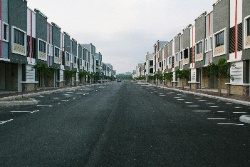Out With The Old, In With The New
For nearly 150 years there’s been a bridge over the Manukau Harbour, but legend has it that the very first crossing was actually a set of stepping stones and at low tide, local iwi used these stones to cross on foot between Māngere and Onehunga.
“It shows the strategic importance this corridor holds in linking the southern and northern suburbs and why Waka Kotahi wants to maintain an accessible off-road connection for these communities,” says Mark Kinvig, National Manager Infrastructure Delivery.
Now, as design and technology leaps forward it’s time to say goodbye to the Old Māngere Bridge with the removal of the last bridge beam as our team proceeds with the construction of a new iconic landmark.
The very first Old Māngere Bridge was built in 1875 and made of timber but unfortunately shipworm soon led to the bridge becoming unsafe, and it was closed in 1914.
In 1915, the second Old Māngere Bridge officially opened. It was made out of reinforced concrete and is believed to be the oldest bridge of this type crossing a New Zealand Harbour.
While it weathered a few storms in its time and even suffered a few ship strikes, it deteriorated over the years and was in such bad condition a temporary bridge was built over it in the 1980s so it could remain open.
The history of the Old Māngere Bridge also reveals the extent to which construction costs have risen with the old bridge costing approximately $0.5m in today’s terms.
Since late 2019, Waka Kotahi and its contractors McConnell Dowell have been simultaneously deconstructing the old bridge while building the new one.
The old bridge has been removed in almost the same process used to build it with the headstock and beams for each span taken out piece by piece.
“Removing the last bridge beam does feel like the end of an era, as the Old Māngere Bridge is a landmark which when talked about within the local community seems to naturally evoke the sharing of long lost family memories and gives us an opportunity to reflect on how much Auckland has changed over the last 100 years.”
“We felt the bridge is such an important slice of history it’s important to hold on to some of it, so, we collaborated with Heritage New Zealand Pouhere Taonga on ways to preserve the materials and these will be used in the landscaping around the abutments of the new bridge,” says Mark Kinvig.
“We have removed some of the plinths that supported the bridge’s old hand rails, and also taken out one of the beams in the bridge structure, with a plan to incorporate them into the immediate area leading up to the new bridge as a link to the past for future generations.”
In partnership with mana whenua, the artwork which will be incorporated on the new bridge helps share the story of the Ōtāhuhu portage which was an important historic passage for many waka that travelled this area.
Despite disruptions due to COVID19, progress on the new bridge is tracking well and is expected to open in late 2022.
The team have built all seven piers which will hold up the bridge deck and the bridge beams across three spans have also been installed ready for the concrete deck to be poured. Towards the end of November, the team will be installing the steel central deck and architectural arch and will then start welding and tensioning these pieces into place.
The architecturally designed bridge will not only provide a way for people to cross the harbour on foot or by bike but it is hoped will remain a destination in itself.
“The deck will be 8-metres wide with two fishing bays extending that to 12-metres and bench seating for people to sit and enjoy the harbour views. The new bridge will also provide increased clearance underneath and space between the piers for waka, canoes and small watercrafts to travel into the Māngere Inlet.”
“Waka Kotahi is always looking for ways to help revitalise and improve communities as part of our infrastructure works. This project ensures that while the structure of the bridge may have changed, its core value; making travel in the area accessible and enjoyable for all, still remains as important in the 21st century as it did in the last.”


 Gordon Campbell: On unemployment, Winston Peters’ low boiling point and music criticism
Gordon Campbell: On unemployment, Winston Peters’ low boiling point and music criticism Labour Party: National Gaslights Women Fighting For Equal Pay
Labour Party: National Gaslights Women Fighting For Equal Pay The Treasury: New Treasury Paper On The Productivity Slowdown
The Treasury: New Treasury Paper On The Productivity Slowdown NZ Government: Government Recommits To Equal Pay
NZ Government: Government Recommits To Equal Pay Emily Ireland - Local Democracy Reporter: Deputy Mayor ‘disgusted’ By Response To Georgina Beyer Sculpture
Emily Ireland - Local Democracy Reporter: Deputy Mayor ‘disgusted’ By Response To Georgina Beyer Sculpture Te Pāti Māori: Māori Unemployment Rate Increases By More Than Four-Times National Rates
Te Pāti Māori: Māori Unemployment Rate Increases By More Than Four-Times National Rates Government: Streamlining Building Consent Changes
Government: Streamlining Building Consent Changes


